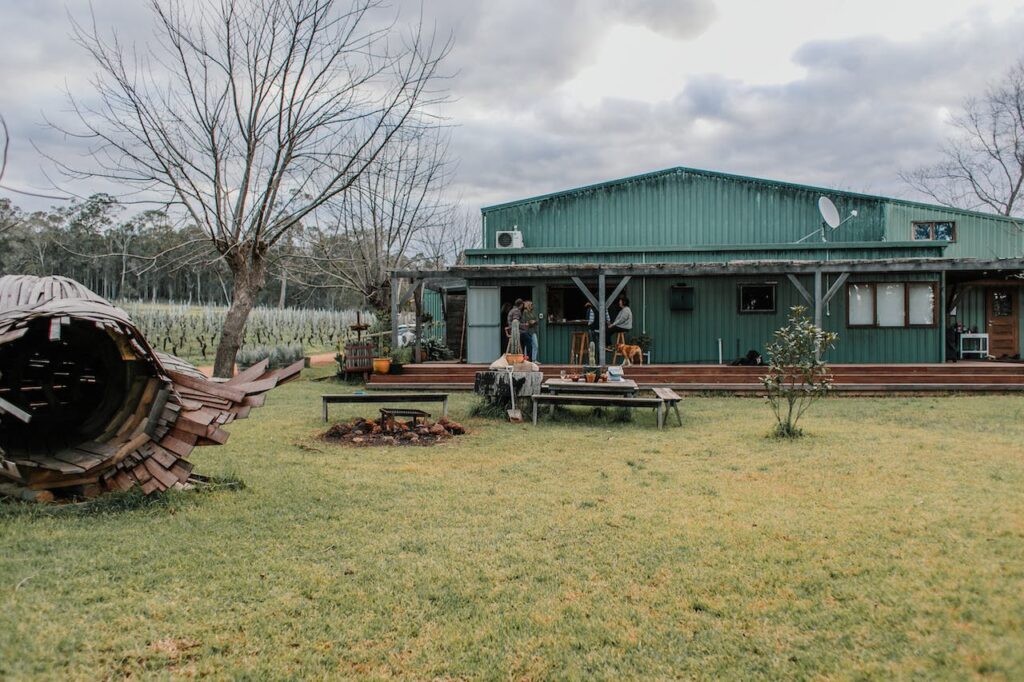A lush, green lawn is a source of pride for any homeowner. It’s a space for relaxation, play, and the perfect backdrop for outdoor gatherings. But, like any living thing, lawns can encounter their fair share of problems. Among the most common and frustrating issues are the appearance of brown and yellow patches. These unsightly blemishes can ruin the overall look of your yard. If your lawn is experiencing this problem, fear not. Lawn care specialists are here to help. In this article, we’ll delve into the art and science of resurrecting your lawn and explore how these specialists tackle those stubborn brown and yellow patches.

Understanding the Culprits
Before diving into the solutions, it’s crucial to understand what’s causing these patches in the first place. Often, several factors can be at play:
1. Soil Compaction:
Compacted soil hinders water and nutrient absorption. This results in poor growth and yellowing of the grass.
2. Thatch Buildup:
Thatch, a layer of dead grass and debris, can accumulate and prevent water from reaching the soil.
3. Pest Infestation:
Insects, such as grubs, chinch bugs, or even animal urine, can damage grassroots, leading to brown spots.
4. Disease:
Fungal diseases can infect the grass, causing discoloration and weakening the plants.
5. Improper Mowing:
Cutting the grass too short or with a dull blade can stress the lawn, making it susceptible to browning.
The Lawn Care Specialist’s Approach
Now that we understand the problems, let’s explore how specialists tackle these issues step by step:
1. Soil Testing:
Specialists often begin by conducting a soil test. This helps determine the pH level and the nutrient content of the soil. If your soil is too acidic or deficient in essential nutrients, it can lead to yellowing. The specialist will then recommend soil amendments or treatments to rectify these imbalances.
2. Aeration:
For compacted soil, specialists use aeration techniques. This process involves creating small holes in the lawn to allow air, water, and nutrients to penetrate the roots. It’s like giving your lawn a breath of fresh air.
3. Dethatching:
In the case of thatch buildup, dethatching is the solution. Specialists use machines or hand tools to remove the excess thatch, restoring proper water and nutrient flow.
4. Pest Control:
For pest-related issues, lawn care specialists employ a range of strategies. This can include the use of insecticides, beneficial nematodes (microscopic organisms that prey on pests), or even modifying your lawn to be less attractive to pests.
5. Disease Management:
When dealing with diseases, specialists identify the specific pathogen affecting your lawn. Based on the diagnosis, they’ll recommend fungicides or other treatments to control the problem. But it’s not just about treating the symptoms; they’ll also advise on how to prevent future outbreaks.
6. Proper Mowing Techniques:
Specialists will educate homeowners on the importance of proper mowing techniques. This includes setting the mower at the right height, sharpening the blade, and mowing at the correct frequency. This prevents further damage from improper mowing.
Maintaining a Healthy Lawn
While specialists can work wonders, maintaining a healthy lawn is an ongoing commitment. Here are some tips to ensure your lawn stays in top shape:
- Proper Watering: Water deeply but infrequently to encourage deep root growth. Early morning is the best time to water, as it reduces the risk of fungal diseases.
- Regular Maintenance: Keep up with regular maintenance tasks like mowing, weeding, and fertilizing. A well-maintained lawn is less likely to develop issues.
- Choose the Right Grass: Select grass varieties that are well-suited to your climate and soil type. Different grasses have varying resistance to pests and diseases.
- Watch for Warning Signs: Regularly inspect your lawn for signs of trouble. Catching problems early can make them easier to address.
- Seek Professional Help: If you’re unsure about the condition of your lawn or how to address specific issues, don’t hesitate to consult with a lawn care specialist.
Brown and yellow patches need not spell doom for your lawn. With the expertise of lawn care specialists and a commitment to proper maintenance, you can resurrect your lawn and enjoy a lush, green carpet in your outdoor space. Remember, a healthy lawn isn’t just beautiful; it’s a place where memories are made and relaxation is found. So, take the first step, and let your specialist breathe life back into your yard. Your green oasis awaits.
Comments